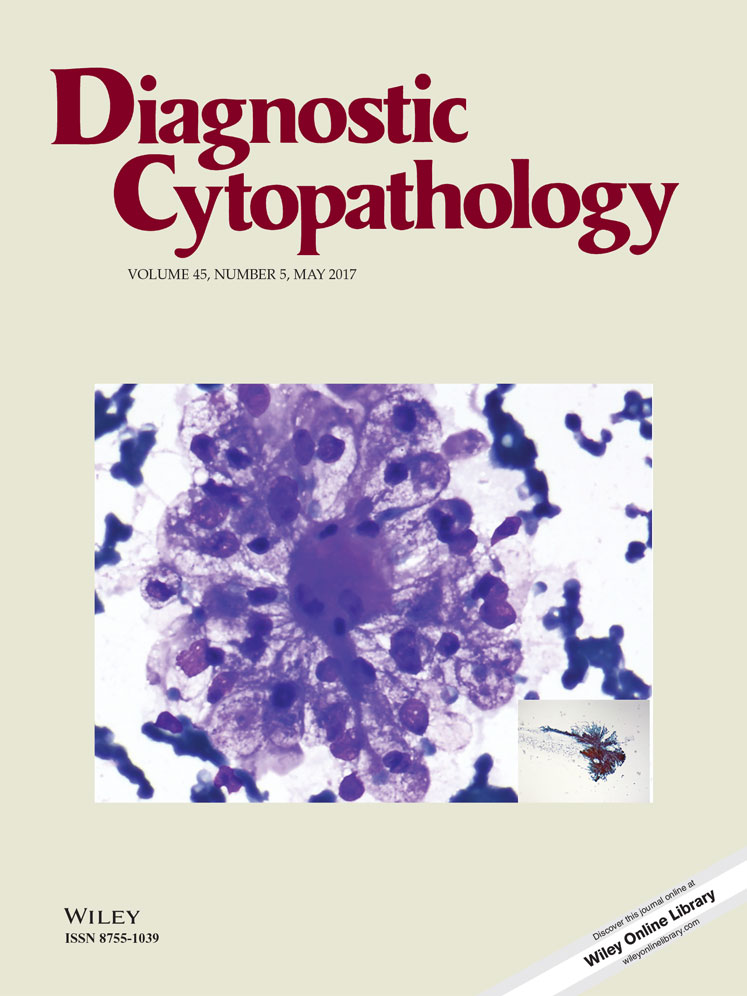Differential diagnosis of well-differentiated squamous cell carcinoma from non-neoplastic oral mucosal lesions: New cytopathologic evaluation method dependent on keratinization-related parameters but not nuclear atypism
Conflicts of Interest Disclosure: The authors have no conflicts of interest to declare.
Abstract
Background
The cytology of oral squamous cell carcinoma (SCC) is challenging because oral SCC cells tend to be well differentiated and lack nuclear atypia, often resulting in a false negative diagnosis. The purpose of this study was to establish practical cytological parameters specific to oral SCCs.
Methods
We reviewed 123 cases of malignancy and 53 of non-neoplastic lesions of the oral mucosa, which had been diagnosed using both cytology and histopathology specimens. From those, we selected 12 SCC and 4 CIS cases that had initially been categorized as NILM to ASC-H with the Bethesda system, as well as 4 non-neoplastic samples categorized as LSIL or ASC-H as controls, and compared their characteristic findings. After careful examinations, we highlighted five cytological parameters, as described in Results. Those 20 cytology samples were then reevaluated by 4 independent examiners using the Bethesda system as well as the 5 parameters.
Results
Five cytological features, (i) concentric arrangement of orangeophilic cells (indicating keratin pearls), (ii) large number of orangeophilic cells, (iii) bizarre-shaped orangeophilic cells without nuclear atypia, (iv) keratoglobules, and (v) uneven filamentous cytoplasm, were found to be significant parameters. All malignant cases contained at least one of those parameters, while none were observed in the four non-neoplastic cases with nuclear atypia. In reevaluations, the Bethesda system did not help the screeners distinguish oral SCCs from non-neoplastic lesions, while use of the five parameters enabled them to make a diagnosis of SCC.
Conclusion
Recognition of the present five parameters is useful for oral SCC cytology. Diagn. Cytopathol. 2017;45:406–417. © 2017 Wiley Periodicals, Inc.




